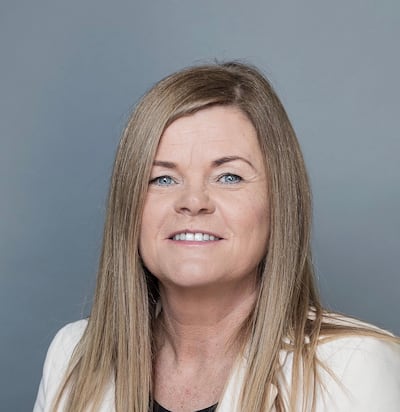According to figures from the Higher Education Authority last year, just 23 per cent of the engineering graduates in Ireland were female. And the bad news gets worse – female engineers represent just 12 per cent of the profession because there is a huge drop-off after they leave college. It raises the question, is enough being done to encourage women into engineering jobs?
It’s not something for which there is a quick fix. While the gap between college and career has yet to be solved, major construction and civil engineering firms are trying much earlier interventions to encourage young women into the industry, sending female engineer role models to secondary schools to engage with young people. It’s too late to start when they’re at college – young adults need to be considering subject choices they make when starting secondary school, to ensure the Stem subjects don’t get left behind.
Another effort has been Guidance and Industry Network (GaIN), an innovative project run by DCU, with supporting industry partners, has brought career guidance counsellors together with industry representatives from a number of sectors, including engineering, so the counsellors can fully understand the breadth of careers on offer, and in turn transmit that information to students.
Chronic skills shortage
All the work that is being done now to encourage secondary school students to think about Stem careers is going to take some time to come to fruition, and perhaps it will show results in the next decade. Meanwhile, the construction sector continues to face a chronic skills shortage, skills that are desperately needed not only to see major projects in the National Development Plan to fruition, but most pressingly, to tackle our housing crisis.

According to PJ Rudden, chairman of the Government’s construction sector innovation and digital adoption subgroup (and a former Engineers Ireland president): “The population is growing faster than anticipated – it’s now expected to be close to 1.3 million extra people by 2040, so at least 40,000 houses are now needed per annum.”
Yet the number of new homes that is being built every year is still only at a fraction of boom years levels. The industry has still not recovered from the sheer numbers of jobs lost in the crash; many emigrated, others retrained, and the memory of the devastation put off many potential new entrants to the industry. According to Rudden we need to double our construction workforce. One obvious solution seems to be to appeal to the half of the population who haven’t traditionally entered the industry in great numbers.
Untapped talent
Tom Byrne, head of communications at construction company Sisk, says the challenges the sector faces in consistently attracting, retaining and promoting women “represent a significant missed opportunity of untapped talent that we are working hard to address”.
The engineering image is moving towards innovation and data-centric problem-solving as we pave the way for a greener, more sustainable future
— Pauline O'Flanagan, director of Ibec trade association Engineering Industries Ireland
Sisk, has been making progress in creating a more inclusive and diverse culture within the organisation in recent years. “There are a range of practical things we have done, from broadening the choice of safety clothing and providing access to sanitary products, to setting up our own building gender balance network to support, encourage and recognise the work being done and what we need to do next.”

Pauline O’Flanagan, director of Ibec trade association Engineering Industries Ireland, believes the sustainability agenda could be an important draw to encourage young people into jobs where they can make an impact. “The engineering image is moving towards innovation and data-centric problem-solving as we pave the way for a greener, more sustainable future,” O’Flanagan says. “Engineering is playing a critical role in responding to global challenges and as such bears enormous societal value. This will appeal to a broader, diverse talent in the future.”
[ Teenage girls increasingly interested in Stem careersOpens in new window ]
She also notes that initiatives and trends which impact all industries – ”gender pay-gap reporting, paid parental leave, sick pay, and generally more flexible work practices such as breast-feeding breaks” – will pave the way for more women to enter traditionally male-dominated sectors.
An image makeover
Furthermore, the increasing use of technology such as building information modelling (BIM) in the construction sector is leading to more sophisticated digital roles and furthering the image makeover of the industry from blue collar to white collar, and a more female-friendly working environment.
Rudden says the construction industry is beginning to appreciate and value ‘the softer skills of stakeholder engagement, communications and social engineering’
Rudden notes: “Modern engineering is not on sites any more but off-site in cleanrooms and large modern construction manufacturing units in strategic locations close to their markets.”
He says the construction industry is beginning to appreciate and value “the softer skills of stakeholder engagement, communications and social engineering” – areas which may have traditionally been seen as more feminine but are absolutely crucial to success at senior leadership level in any sector.
Construction and civil engineering are not the only area where there is a need for more qualified engineers – the career choices also include chemical, mechanical, biomedical and electrical engineering. With Ireland’s thriving pharma, tech and life sciences sectors, there are scores of opportunities, not to mention the renewables sector which expects stratospheric growth in the coming years.
Along with private companies, organisations such as Ibec, and industry groups such as Engineers Ireland actively trying to encourage young women to consider Stem subjects and careers in engineering, Science Foundation Ireland (SFI) is committed to increasing the number of SFI grants held by women researchers, as part of its gender strategy. To further its aim, the SFI Industry RD&I Fellowship Programme provides additional supports for women researchers to secure funding.
Is there enough being done to promote engineering careers to women and girls? There is certainly work being done, and slowly but surely, change is happening. Communication is key, as Byrne outlines; corporate storytelling campaigns on the Sisk website and social media play a part by giving concrete examples. “We show how women are being successful in their careers after joining us… You have to see it to be it, as the phrase goes.”











